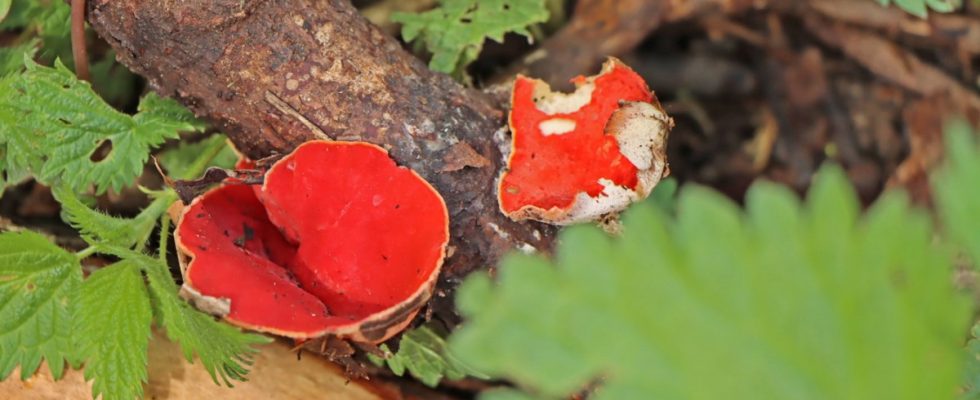The Austrian Chalice Beaker is a very showy bright scarlet mushroom that looks almost tropical. However, it is very rare and also difficult to find: It thrives mainly under dead branches of sycamore trees and alders that lie around on the forest floor in primeval mixed forests and gradually rot. In the Bavarian Forest, no ten places were known where it occurs. Sarcoscypha austriaca, as it is called scientifically, has recently been detected in the Bavarian Forest National Park – for the first time in the history of the protected area. Namely from a young intern from the national administration who has not even been in the protected area for a week.
Andreas Denzel, 21, is studying geoecology and is currently doing an internship in the research department of the national park. As part of their fungal monitoring, he was supposed to record stocks of Black Borstle near the village of Buchenau. Pseudoplectania nigrella, which occurs almost exclusively near streams in the Bavarian Forest, is known primarily to pharmacists because an antibiotic has been isolated from it. Rather casually, Denzel then came across a comparatively high number of scarlet glowing mushrooms near a stream and informed his supervisor. A little later it was clear that they were Austrian Chalice Beakerlings.
“Sarcoscypha austriaca has very specific habitat requirements,” says the national park’s mushroom specialist, Peter Karasch. “That’s why it’s so rare and only a little more common in the Alps.” The fungus needs very near-natural floodplain and ravine forests with a high proportion of dying or already dead deciduous trees. Its wood is decomposed by it and converted into humus in the course of its life cycle. A special feature of Sarcoscypha austriaca is that it can be found very early in the year. The fruiting bodies are already developing under the snow cover, so you can come across them shortly after the snow melts.
Andreas Denzel, intern in the Bavarian Forest National Park and discoverer of the Austrian calyx beaker.
(Photo: Bavarian Forest National Park)
Despite its warning color, the Austrian cup-cup is non-toxic, you can even eat it. Mushroom specialist Karasch, however, advises against it: “The pulp is leathery and tough.” The Bavarian Forest National Park is known for its gigantic variety of mushrooms. More than 2000 species have been documented in the protected area. However, Karasch and his team assume that there are several hundred more. Some types of mushrooms only occur in Germany in the protected area. An example is the rose-scented fire sponge that grows on mighty dead fir trees. The fungus, which is one of the polypores and is so called because it exudes an intense rose scent, has only been documented in six other places worldwide.

